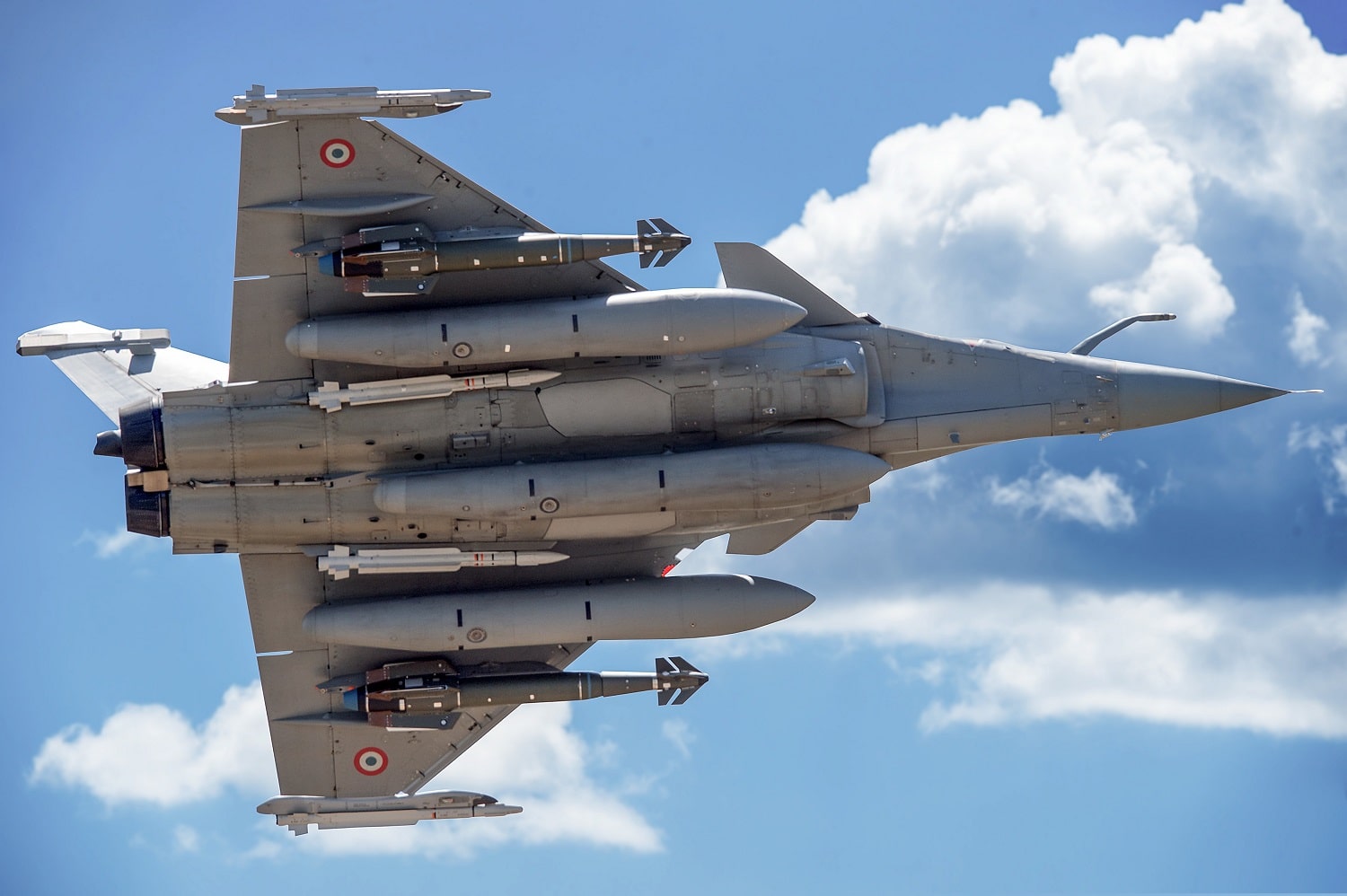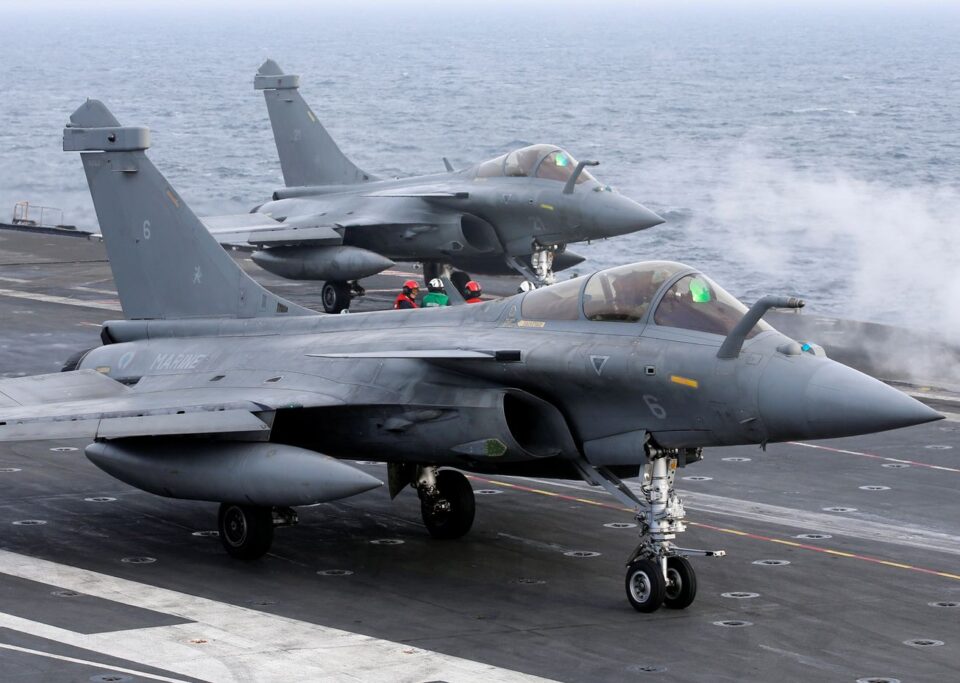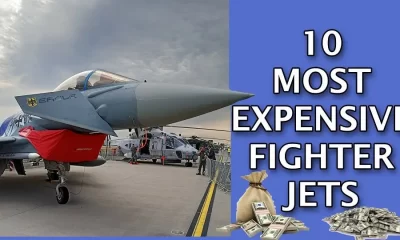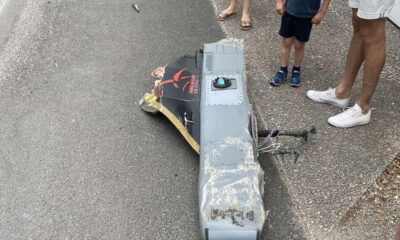Aerospace
Why is there no two-seater Rafale variant for the naval version?

Rafale is one of the world’s most successful fighter jets. It was first introduced in 2001. However, by the later years, this aircraft had received significant modifications. The Rafale is equipped with a variety of weaponry and is designed to execute missions such as air superiority, interdiction, aerial surveillance, ground support, in-depth strike, anti-ship strike, and nuclear deterrence. Dassault describes the Rafale as a “omnirole” aircraft. The Rafale fighter jet’s marine variant has a stronger undercarriage and nose wheel, as well as a larger arrester hook, an integrated ladder, and other minor differences from the ground version.
The F4 comparable standard naval variant of the Rafale is the Rafale M. The rafale jet’s maritime version has a stronger undercarriage and nose wheel, a larger arrester hook, an integrated ladder, and other minor variations from the rafale now in service with the Indian air force.
India is now in the process of procuring new fighter fighters for its naval aircraft carrier. The F/A 18 super hornet, which was developed in the United States, and the Rafale Marine, which was built in France, are both strong contenders for the bid.
Due to design specifications such as a stronger undercarriage and nose wheel, as well as a larger arrester hook, modifying the configuration of the Rafale for a two-seat form is difficult. Typically, the Rafale is utilised extensively in single-seater variants. Dassualt may consider developing a version in the future.
For the time being, it is just supplying a single seater for the naval version. The two-seat aircraft is primarily utilised for training as well as long-range missile deployment. Ground-based aircraft can be utilised to train the Rafale aircraft if the point of view is for training purposes.
If the Rafale had a two-seat variant, it would have won the competition. Since the Rafale aircraft made by Dassault is already in the Indian Air Force.
First civilian version of Dornier 228 : Features , Seats, Range and Speed
Rafale has demonstrated its remarkable capabilities aboard an Indian-built aircraft carrier. According to sources, the Rafale marine variant can fit into the vikramaditya’s lift bay, whereas the F-18 cannot, even with folded wings, fit into the lift bay of the vikramaditya. The Aircraft Carrier can accommodate more Rafale aircraft than the F/A 18.
Rafale can transport up to four or five tonnes of external cargo, as well as full internal fuel for the ski jump. It can carry more weaponry with less internal fuel, depending on mission requirements.
India’s Chinook Helicopter Creates A New Unique Record
With full internal fuel, it can perform all duties, including combat air patrol, intercepts, AD escort, and sea and land strike.
If the Rafale Marine is selected, India may seek to lease four or five of the planes for immediate deployment. Currently, the vikramaditya is armed with two squadrons of aged MiG 29 fighter jets.
Is India’s VVIP Aircraft the world’s most advanced after the B747 of the US Air Force one?
The Rafale marine that was sent for testing is the most recent version of the fighter-specific upgrade. This fighter plane is equipped with one-of-a-kind armaments, making it a more lethal battle fighter. It’s a nuclear-capable meteor air-to-air missile, as well as SCALP air-to-ground missiles and hammer precision guided ammunition.

Aerospace
Which is bigger 777x or 787 aircraft ?

The 777X is a new series of the Boeing 777 family and is designed to be larger and more efficient than its predecessor. It features two variants: the 777-8 and the 777-9, being the larger of the two.
The Boeing 777X emerges as the larger sibling within the Boeing family, representing a significant leap forward in both size and efficiency. Comprising two variants, the 777-8 and the 777-9, the latter takes the crown as the larger of the two. With its expansive fuselage and impressive wingspan, the 777X is tailored for long-range journeys and boasts a substantial passenger capacity.
On the other hand, the Boeing 787, affectionately known as the Dreamliner, occupies a niche in the market as a smaller yet formidable aircraft designed for medium to long-range flights. Its distinguishing feature lies in its composite fuselage, a technological marvel that renders it lighter and more fuel-efficient compared to conventional aluminum counterparts. The Boeing 777X is larger than the Boeing 787 aircraft.
When it comes to passenger capacity, the 777-9 reigns supreme, typically accommodating a sizeable contingent of 400-425 passengers in its standard configuration. In contrast, the 787, with its more modest dimensions, typically carries between 240-290 passengers, depending on the variant and layout.
One of the remarkable innovations introduced with the 777X is its folding wingtips, a feature designed to address the logistical challenges of accommodating such a large aircraft in conventional airport gates. These folding wingtips enable the 777X to retract its wings, allowing it to fit into gates designed for smaller aircraft while still reaping the benefits of an extended wingspan during flight, thereby enhancing fuel efficiency and operational flexibility
Aerospace
China Secures Production Certificate for Mass Production of Pilotless eVTOL Aircraft

The first passenger-carrying pilotless electric vertical takeoff and landing (eVTOL) aircraft in the world, the EH216-S, has received the Production Certificate for its eVTOL aircraft from the Civil Aviation Administration of China (CAAC).
This is a significant milestone for EHang Holdings Limited, the leading UAM technology platform company in the world. This outstanding accomplishment is another big step towards mass manufacturing for the eVTOL aircraft and the ensuing commercial operations, building on the ground-breaking acquisition of the Type Certificate and the Standard Airworthiness Certificate for the EH216-S.
The PC is a crucial certificate that the aircraft maker receives from the CAAC, the country’s aviation authority. By obtaining this certificate, EHang has demonstrated that it has set up a quality management system for mass production that satisfies the airworthiness regulation standards set forth by the CAAC, and the company has been given permission to continue producing mass quantities.
It is also a strong guarantee of the calibre of the goods made by EHang. Raw materials, supplier management, manufacturing organisation, production quality control, aircraft pre-delivery test, after-sales repair and maintenance, etc. are all included in the mass production quality management system for the EH216-S.
To ensure that every aircraft and its components that roll off the production line strictly adhere to the approved type design and safety requirements, the system sets clear guidelines and documentation for every step in the production procedure. This ensures comprehensive traceability and safety control.
Aerospace
Four Airbus A380 Superjumbos lined up to be scrapped

In a strategic move aimed at reclaiming valuable resources from the iconic Airbus A380 aircraft, VAS Aero Services and Dr. Peters Group have announced a significant collaboration.
This partnership marks a milestone in aviation logistics and aftermarket services, with four of these colossal planes slated for teardown and redistribution of used serviceable material (USM).
The venture between VAS Aero Services, renowned for its expertise in aircraft dismantlement, and Dr. Peters Group, a prominent Germany-based investment fund management firm, underscores a commitment to sustainable aviation practices. This isn’t their first foray into scrapping A380s; their successful partnership has already seen the dismantlement of these aircraft, making them pioneers in this niche.
Under the agreement, the latest consignment brings the tally to eight A380s entrusted to VAS by Dr. Peters Group. Managing Director Christian Mailly of Dr. Peters Group emphasized the trust placed in VAS, citing their unparalleled capabilities in dismantlement and aftermarket sales network. It’s a strategic move in response to the growing demand for quality USM parts, particularly with the resurgence in reliance on the A380.
Notably, the teardown process will be carried out at various locations, optimizing the positioning of harvested parts to cater to different markets. While some parts will be positioned in Europe to support operators in the region and the Middle East, others will remain in the Asia-Pacific region. This meticulous strategy ensures efficient access to spare parts, benefiting MROs and airlines across these markets.
The decision to retire these A380s comes at a time when operators are reassessing fleet strategies amidst evolving market dynamics. Despite initial plans for quick retirement due to the emergence of more fuel-efficient alternatives, factors such as a rebound in long-haul demand and delays in new widebody deliveries have prompted operators to reconsider. The A380, with its unique capacity and capabilities, presents a practical solution for short-term capacity management.


























